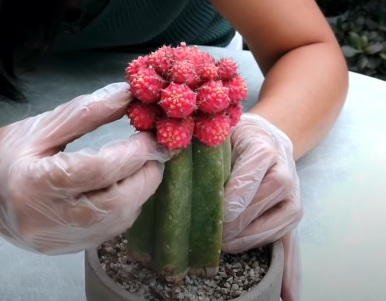Whether new to gardening or experienced, discover how to thrive with a moon cactus display at home. Join our journey to uncover cultivation secrets and unlock their magic. Practical details guide to unlocking each moon cactus’ full potential through nurturing care. Their uniqueness and captivating nature are revealed through cultivation insights for indoor success.
Our guest today is Gymnocalycium Mihanovichii or, as it is often called, Moon Cactus native to Argentina and Paraguay. This cactus was first discovered by the Czech traveler Alberto Vojtecha Frich. This species was named after him.
Table of Contents
Moon Cactus Care Tips
Lighting
Like all representatives of the genus Gymnocalycium, the Moon Cactus is very demanding on lighting – bright light is necessary. However, it should be remembered that at different times of the year, the amount of direct sun on the plant plays a vital role.
In autumn and winter, it is necessary to supplement the Moon Cactus with phytolamps. In the summer months and late spring, you should be more careful when approaching midday light. It is direct sunlight in the brightest and hottest weather that can cause burns.
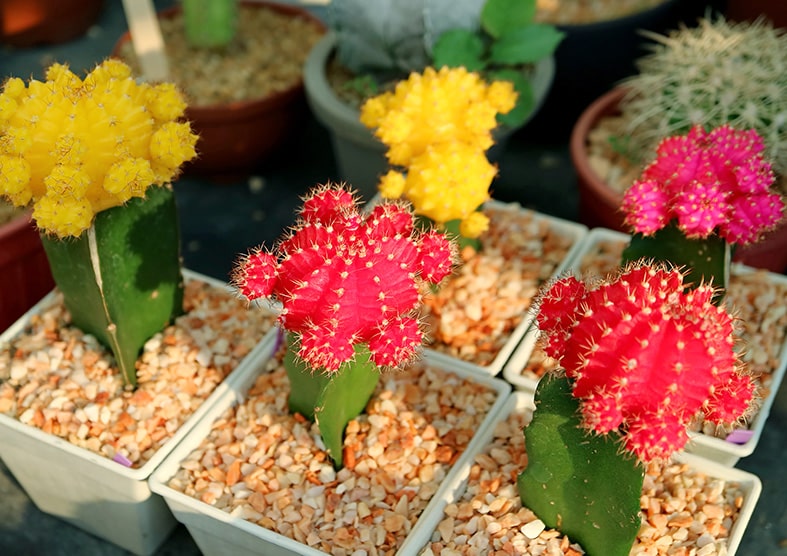
In general, the Moon Cactus is very light-loving and easily tolerates saturated light. When placing the flower in very illuminated places, try to organize shading during the midday hours. Very often this variety can be found next to a computer monitor or laptop.
Temperature
The temperature regime is also selected based on the seasons. Namely, during the active growth phase of the plant, Moon Cactus is kept at ambient air temperatures in the range of 22-24 degrees Celsius. In the autumn months, the temperature should be gradually reduced to about 20 degrees.
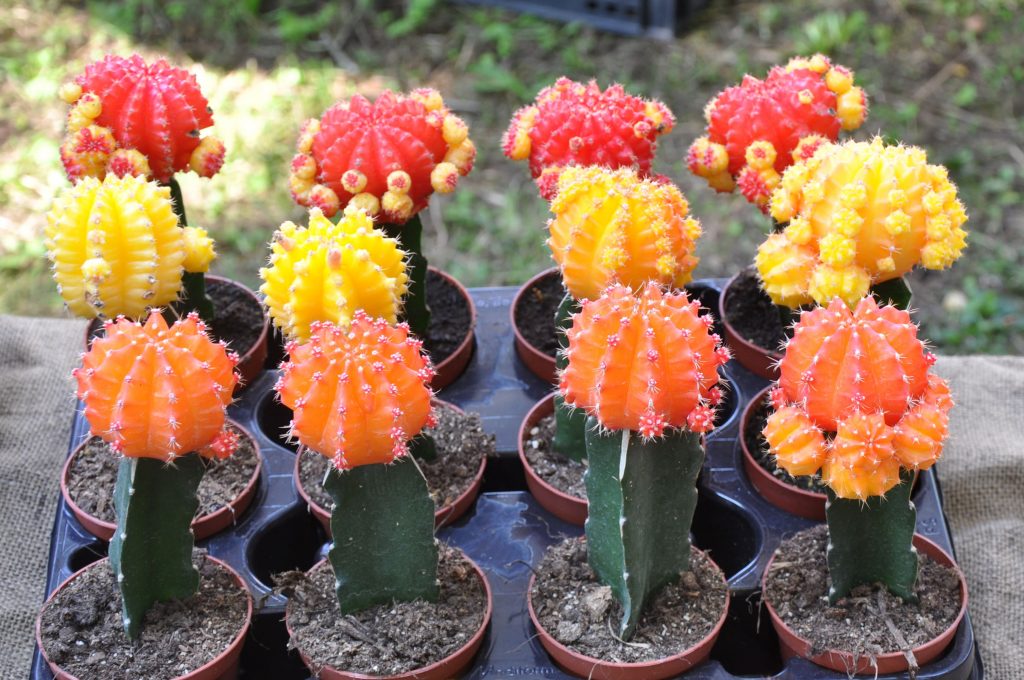
In winter, this species is kept in the range of 16-18 °C. However, the minimum temperature threshold should not fall below 7-8 °C.
When choosing the location of the Moon Cactus in the house, take into account the presence and operation of heating radiators. Warm and dry air from batteries can lead to local overheating of the soil and air around the cactus.
Air humidity
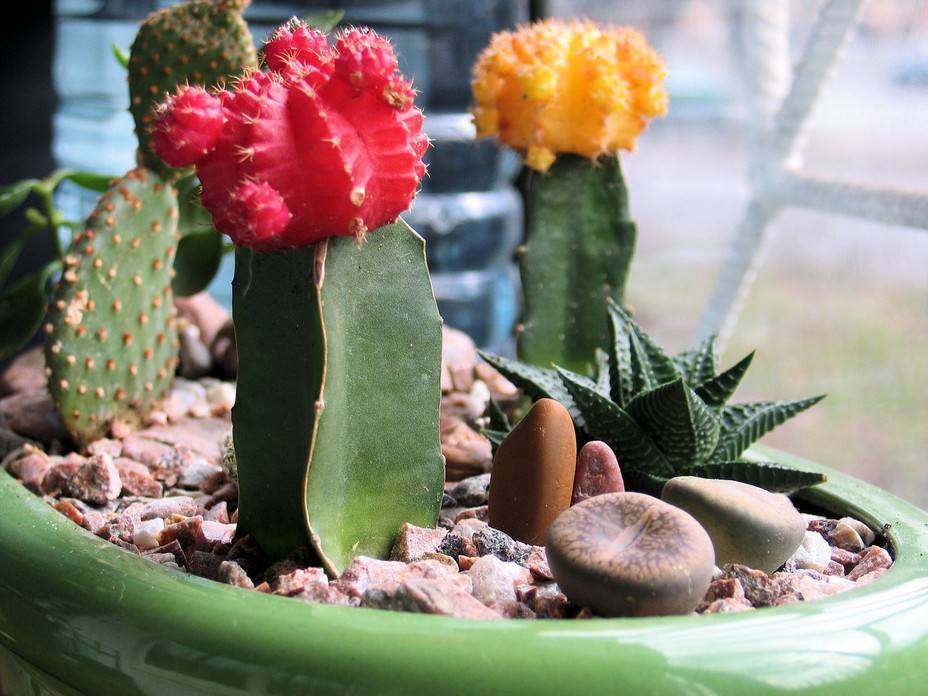
Almost all succulents do not have serious requirements for this indicator. The entire genus of Gymnocalycium can easily tolerate dry air for a long time.
However, spraying in the evening will not be superfluous, because Moon Cactus can absorb moisture not only through the root system but also from the surrounding air.
Watering
How to properly water Moon Cactus? Fortunately, the answer to this question is very simple and does not differ much from the general requirements of the entire cactus family. Let’s look at it in detail.
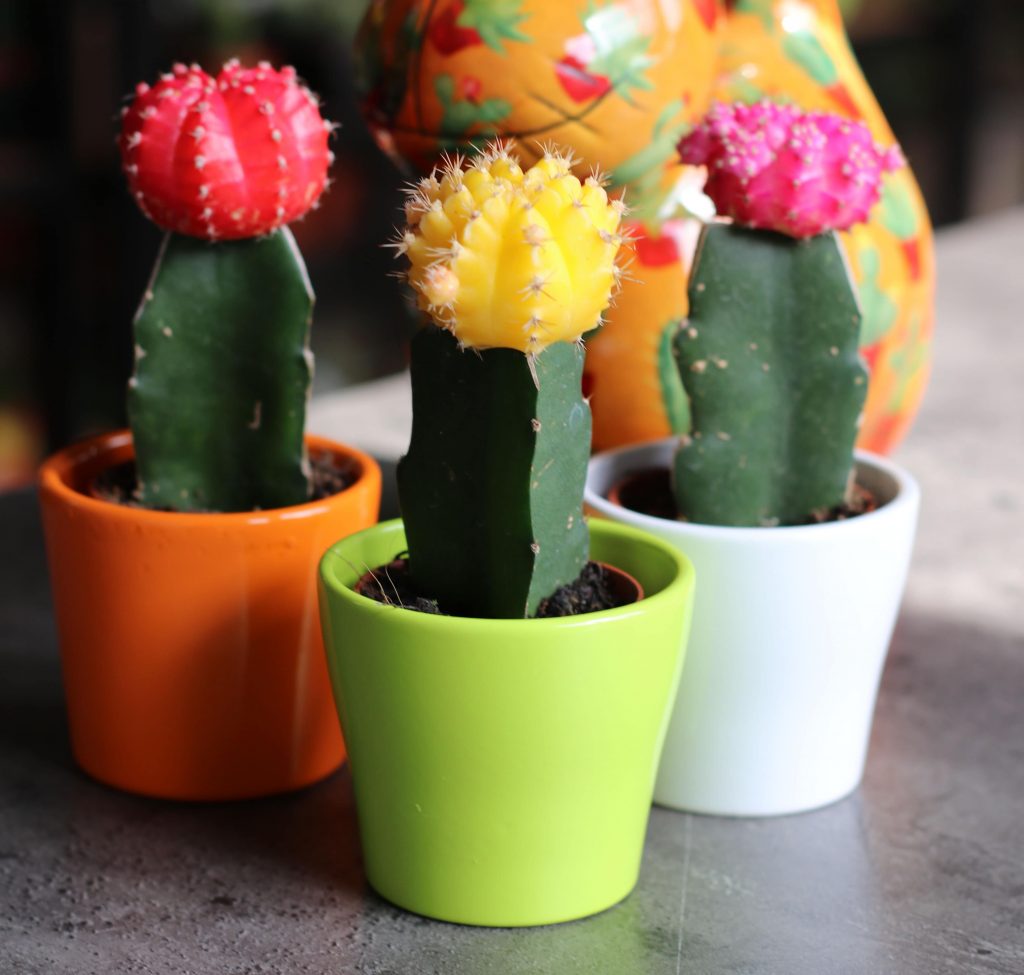
When adding water to the soil, be aware of the hardness and allow the water to settle before watering. This procedure also allows chlorine to leave the water. However, this requires at least 10-12 hours and the container must be open, with free access to air.
Filtering water using filters is no less effective. Even the simplest and most inexpensive varieties are suitable for this.
Water at room temperature is considered ideal for irrigation. Under no circumstances should you water the Moon Cactus with cold or hot water. The roots of the cactus can be severely damaged, causing disease or even the complete death of the succulent.
Similar requirements for water temperature conditions apply to irrigation.
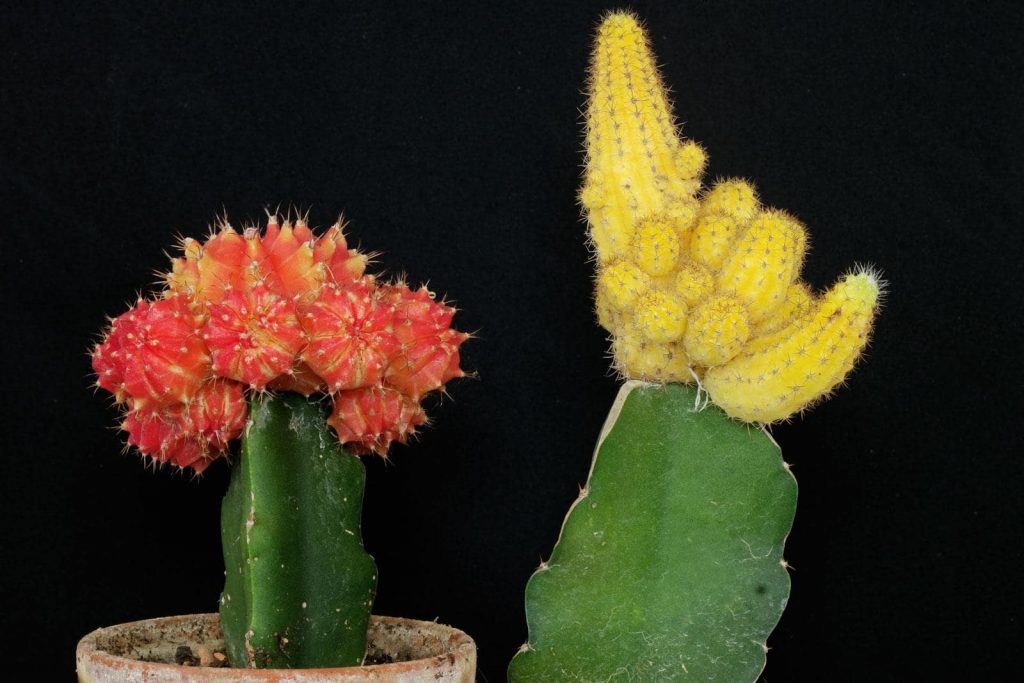
In the summer months, during the active growth phase of the Moon Cactus, it needs regular and fairly abundant watering. With the beginning of autumn, the amount of moisture entering the soil is gradually reduced. Usually, this is 2-3 times a week, while in summer watering can even be daily.
Starting in mid-autumn, stop all spraying completely and reduce watering to once a week. In winter, you must water this type of succulent very rarely – 1-2 times a month or even less often.
This largely depends on the temperature and humidity of the surrounding air. The volume of the container with soil is also of great importance. Consider all these factors when caring for Moon Cactus at home.
Soil
What kind of soil is needed for Moon Cactus? Everything is very simple – standard soil for cacti and succulents is good. The main requirement is that the soil mixture is loose and allows the root system to breathe.
The roots of a plant need air vitally, while water poured into a pot performs only a transport function to deliver micro and macro elements to the stem of the plant through the roots.
It is the acidification and waterlogging of the soil in the pot that is the main problem and a danger for Moon Cactus.
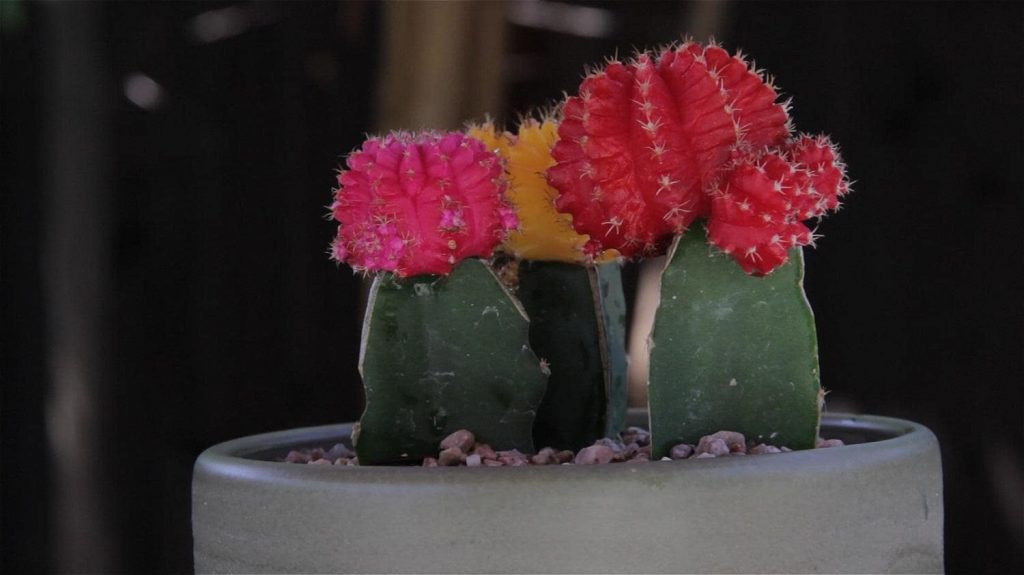
For this reason, you should take care in advance of the presence of high-quality drainage at the base of the Moon Cactus pot. Small expanded clay or broken brick would be ideal. You can also use regular river pebbles.
If you don’t want to use store-bought soil, you can prepare the soil for planting yourself. Take peat – 2 parts, sand – 2 parts, humus – 1 part, turf soil – 1 part.
Be sure to add leavening agents such as vermiculite or perlite. The first option is preferable.
When replanting a moon cactus, make sure that the new pot is 15-25% larger in volume than the previous one. Don’t forget to partially straighten the bottom of the root system. This contributes to faster adaptation of the roots in the new container.
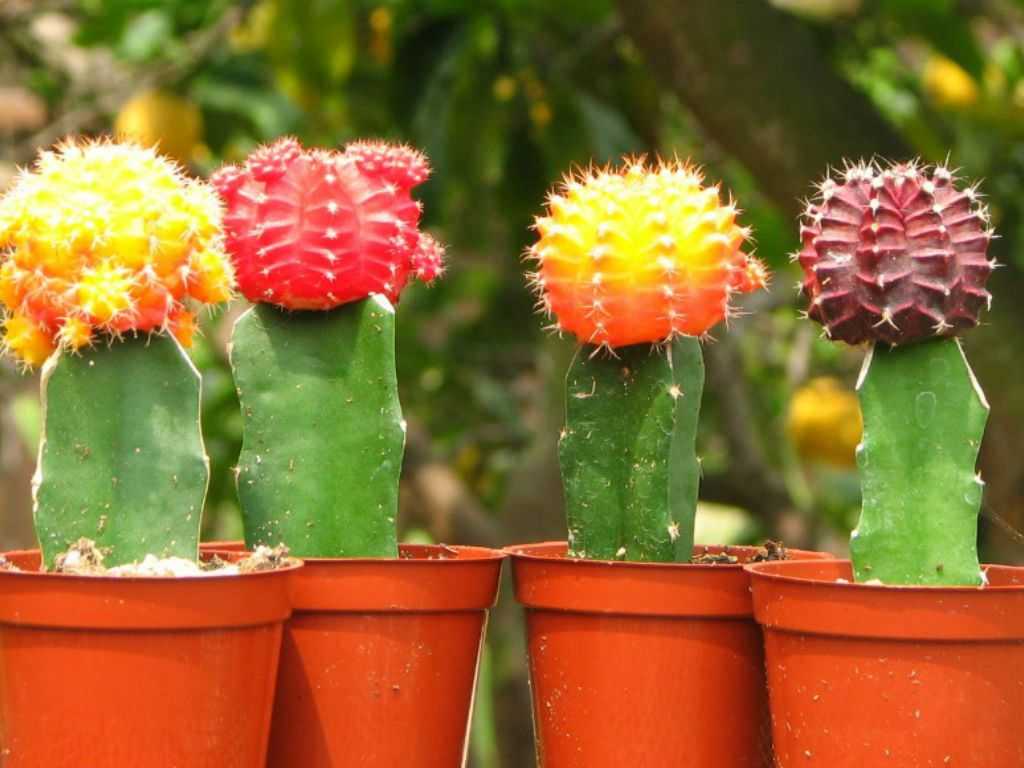
Broken brick or marble chips are also added to the ground. In terms of acidity, the soil should be slightly acidic or neutral. Cacti cannot tolerate an alkaline environment and will begin to get sick. To acidify the soil, you can add 0.5 parts of coniferous soil.
When preparing the soil mixture yourself, remember that it is necessary to disinfect it. Under normal home conditions, this can be done by steaming or calcining in the oven.
If you neglect this, you can easily get problems with nematodes, which are practically not removed from indoor plants. In addition to this pest, you risk introducing a whole range of fungal diseases.
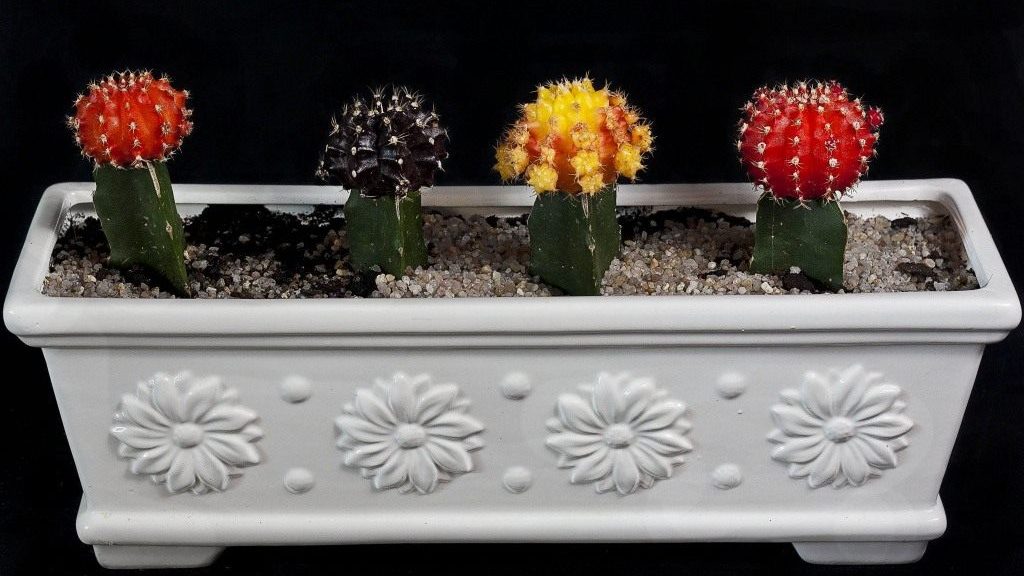
For the reasons described above, we strongly recommend using industrially prepared mixtures from stores. They can be easily improved by adding mineral supplements and special leavening agents.
Which pot is better to choose for Moon Cactus? The answer is absolutely clear. try to give preference to wider containers. Do not plant the Moon Cactus in deep pots. The roots of this type of cactus do not like excessive moisture and practically do not grow in depth.
Moon Cactus Fertilizer
You can add useful micro and macro elements to the soil only in the late spring and summer months. Minor fertilizing in early autumn is also allowed. In winter, fertilizing is strictly prohibited.

Always remember the golden rule – overfeeding is much more dangerous than underfeeding. Excess nutrients can cause irreparable damage to your pet and even lead to the complete death of the plant.
To feed this species, professional cactus growers prefer to use mineral cactus fertilizers. Mostly in liquid form. On the shelves of shops or Amazon, there is a very wide range of different options. When choosing, try to give preference to the specimens that are richest in composition.
When diluting and using, always strictly follow the instructions for use. It is especially important to take this into account when diluting the required concentrations.
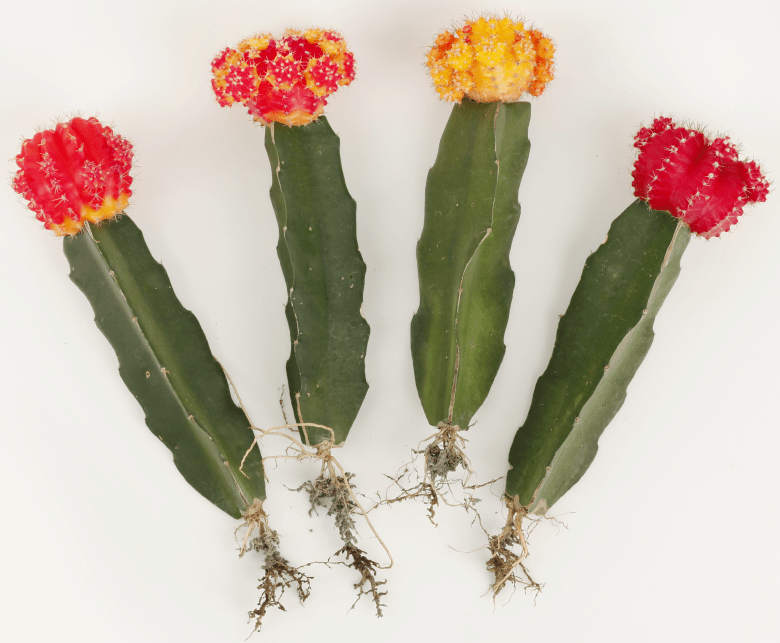
It is better to make the solution weaker and apply it more often than to water with an excessive concentration of nutrients.
However, in addition to store-bought ready-made chemical cactus fertilizers, you can fertilize this beauty yourself. You will need ingredients that are quite accessible to everyone. The simplest and most effective way to add the necessary calcium is to add broken eggshells.
Thanks to it, the Moon Cactus will become stronger and will significantly increase its effectiveness. The crushed shells can be simply placed on the surface of the soil.
After transplanting the Moon Cactus into a new pot with fresh soil, you should not feed the plant. The new soil still contains a sufficient supply of nutrients.
Diseases and Pests
Like all varieties of cacti, the following pests are most dangerous to this species:
- Red spider mite
- Mealybug
As for the most common diseases, cactus rot most often occurs. This problem is associated with improper watering regimes and non-compliance with temperature conditions.

The main and main problem leading to the most disastrous results is overwatering the plant. It is the constant presence of excess moisture in the soil that leads to the rotting of the main stem. Unfortunately, in most cases, this process is irreversible and leads to the death of the Moon Cactus.


